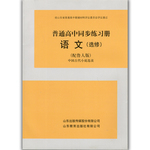题目内容
A woman was collecting money for a church charity. The money she collected was going to be given to poor children who had no parents to take care of them. She went from apartment to apartment and from house to house. She knocked on doors and asked for money. She always said the same thing. “Good morning, I’m collecting for a church charity. Please give generously. We need $5,000.” Then she held out a collecting box. Most people put a few coins in the box. An artist lived in one of the apartments. He opened the door. “Good morning.” she said. “I’m collecting for a church charity. Please give generously. We need $5,000.” The artist thought for a moment, then he said, “I’m sorry, but I don’t have any money. However, I’ll give you a painting. It’s worth $ 400.” The woman thanked the artist and took the painting away. A week later she called on him again. “I’m sorry to trouble you again,” she said, “but we still need more money. I need another $ 100. Can you help?” “Of course,” the artist said. “I’ll increase the value of my painting to $ 500.”
【小题1】Who was the woman collecting money for?
| A.Poor children. | B.Herself. | C.Her friends. | D.A church. |
| A.A lot of money. | B.A few dollars. | C.Paintings. | D.Very little money. |
| A.He was not a generous man. |
| B.He did not have any money. |
| C.He had too many paintings. |
| D.His paintings were worth a lot of money. |
| A.No, she didn’t. | B.Yes, she did. |
| C.We don’t know. | D.Yes, she does. |
| A.$5,000 | B.$5,00 | C.$4,00 | D.We don’t know. |
【小题1】A
【小题2】D
【小题3】B
【小题4】A
【小题5】A
解析试题分析:这篇短文中主要描述了一个为教会慈善机构捐款的女人,在画家捐出一幅画后,仍不满足,得到了画家的一个不客气的回应。
【小题1】根据The money she collected was going to be given to poor children可知选A。
【小题2】根据Most people put a few coins in the box.描述,可知选D。
【小题3】根据“I’m sorry, but I don’t have any money. However, I’ll give you a painting.描述,可知选B。
【小题4】根据she said, “but we still need more money. I need another $ 100.及下文描述,可知选A。
【小题5】根据We need $5,000.”可知选A。
考点:关于一个募捐者和画家的记述文阅读
点评:对于文章中的细节题,要注意文章中的细节的理解。推断题测试考生在阅读基础上的逻辑推理能力,要求考生根据文章所述事件的逻辑关系,对未说明的趋势或结局作出合理的推断;或根据作者所阐述的观点理论,对文章未涉及的现象、事例给以解释。考生首先要仔细阅读短文,完整了解信息,准确把握作者观点。

 海淀黄冈名师导航系列答案
海淀黄冈名师导航系列答案 普通高中同步练习册系列答案
普通高中同步练习册系列答案
Have you ever suddenly felt that someone you know was in trouble—and he was? Have you ever dreamed something that came true later? Maybe you have ESP.
ESP stands for(代表) Extra Sensory Perception. It may be called a sixth sense. It seems to let people know about events before they happen, or events that are happening some distance away.
Here is an example: A woman was doing washing. Suddenly she screamed, “My father is dead!” I saw him sitting in the chair!” Just then. a telegram came. The woman’s father had died of a heart attack. He died sitting in a chair.
There are thousands of stories like this on record. Scientists are studying them to find out what is behind these strange mental messages. Here’s another example—one of hundreds of dreams that have come true.
A man dreamed he was walking along a road when a horse and carriage came by. The driver said, “There’s room for one more.” The man felt the driver was dead, so he ran away. The next day the man was getting on a crowded bus. The bus driver said, “There’s room for one more.” Then the man saw the driver’s face was the same face he had seen in the dream. He wouldn’t get on the bus. As the bus drove off, it crashed and burst into flames. Everyone was killed!
Some people say stories like these are lies or coincidences. Others, including some scientists say that ESP is true. From studies of ESP, we may some day learn more about the human mind.
【小题1】People with ESP may know about ____________
| A.someone’s trouble | B.events before they happen |
| C.their dreams | D.events after they happen |
| A.all people have ESP | B.some women or men have ESP |
| C.children have ESP | D.no have ESP |
